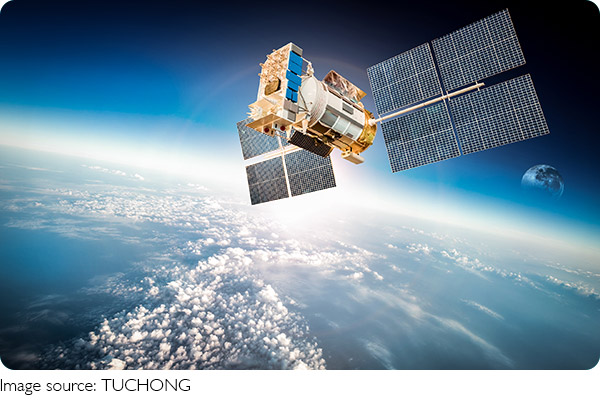Satellite Internet

In today's world, internet connectivity is essential, not just for communication but for accessing information, education, healthcare, and even employment opportunities.
Yet, millions of people around the globe, especially in remote or rural areas, still struggle with slow or no internet access. But there's good news on the horizon.
Satellite internet, powered by low-Earth orbit (LEO) satellites like SpaceX's Starlink, is on track to change this, bringing high-speed internet to even the most isolated parts of the planet. But how exactly is this technology transforming the global communications landscape?
The Power of Low-Earth Orbit Satellites
Traditionally, satellite internet relied on geostationary satellites positioned thousands of kilometers above the Earth. These satellites provided broad coverage, but the high altitude meant significant delays (latency), and the infrastructure was costly. In contrast, LEO satellites, like those launched by Starlink, orbit much closer to the Earth—typically between 340 km and 1,200 km above the surface.
Because of their proximity, LEO satellites can provide faster internet speeds with lower latency. They also cover smaller areas, allowing for a dense network of satellites that can provide continuous service, even in areas where traditional broadband infrastructure is nonexistent. As a result, we're witnessing a rapid expansion of internet access in remote and underserved regions.
Starlink: Paving the Way for Global Connectivity
SpaceX's Starlink project is one of the most notable examples of this shift in satellite internet technology. Launched in 2019, Starlink has already deployed thousands of satellites in low-Earth orbit, with plans to launch many more in the coming years. By 2024, it's expected that Starlink will be able to provide high-speed, low-latency internet to almost every corner of the world.
Starlink's primary goal is to connect rural and underserved areas where traditional broadband providers either don't reach or cannot justify the expense of building infrastructure. For example, remote communities in northern Canada, parts of Africa, and rural areas in South America are now receiving stable internet connections, allowing residents to access everything from education and healthcare to remote work opportunities.
Impact on Global Communications
The implications of global satellite internet connectivity are profound. With services like Starlink, we are breaking down the barriers to access that have traditionally limited economic and social development in remote areas. Access to the internet can open up a wealth of opportunities for people in underserved regions. Education, for instance, becomes more accessible. Online learning programs can reach students in areas where schools are scarce, and healthcare services can be delivered via telemedicine, making healthcare more equitable.
Furthermore, businesses in remote regions can now connect with global markets, leading to new economic opportunities. Farmers can get real-time weather forecasts and market prices, helping them make better decisions and increase productivity. Entrepreneurs in isolated areas can start businesses with the help of e-commerce platforms and online marketing. This connectivity has the potential to reduce global inequalities by leveling the playing field for communities that have been left behind by traditional broadband.
Challenges and Limitations
Despite the promising potential, satellite internet is not without its challenges. One major concern is the cost. Although Starlink and other satellite internet providers aim to make their services affordable, the cost of setting up the satellite infrastructure—launching rockets and deploying thousands of satellites—remains significant. This cost is passed on to consumers, with Starlink's initial setup fees and subscription plans being higher than traditional broadband services.
Another challenge is the issue of space debris. As more satellites are launched into low-Earth orbit, there is an increasing risk of collisions between satellites, as well as with other objects in space. To address this, companies like SpaceX are working on technologies to mitigate the risk of debris and to ensure that satellites can be deorbited safely at the end of their operational life.
Moreover, weather conditions and geographical factors such as mountainous terrain may still affect satellite internet service quality. While the technology is improving rapidly, areas with extreme weather patterns may face interruptions in service.
The Future of Global Connectivity
Looking ahead, the possibilities for satellite internet are exciting. SpaceX's Starlink is just one example, but many other companies are also racing to deploy satellite constellations of their own. The success of these projects could pave the way for a more interconnected world where fast, affordable internet is available to everyone, no matter where they live.
As these satellite networks expand, we can expect even faster speeds, more reliable service, and increased affordability. This global connectivity has the potential to transform industries, enhance access to critical services, and reduce inequalities, particularly in developing regions.

Conclusion: A New Era of Connectivity
Satellite internet, particularly through low-Earth orbit satellites like those offered by Starlink, is ushering in a new era of global connectivity. By overcoming the geographical and economic barriers to traditional broadband, satellite internet is connecting people in remote corners of the world and opening up new possibilities for education, healthcare, business, and more. While there are still challenges to address, the future of global internet access is undeniably bright.
We are on the brink of a digital revolution that will change the way we live and work, connecting everyone to the world in ways we never thought possible. The next time you access the internet, whether it's for work, school, or entertainment, remember: this technology could be making its way from the stars directly to your device!
-
 Space Junk CrisisHow Space Debris Poses a Growing Threat to Space Exploration and What We Can Do About It
Space Junk CrisisHow Space Debris Poses a Growing Threat to Space Exploration and What We Can Do About It -
 VR and AR RevolutionHow Virtual and Augmented Reality are Transforming Entertainment, Education, and Healthcare
VR and AR RevolutionHow Virtual and Augmented Reality are Transforming Entertainment, Education, and Healthcare -
 Smart Cities and IoTHow IoT and Smart Cities Are Revolutionizing Urban Life, from Traffic to Energy Use
Smart Cities and IoTHow IoT and Smart Cities Are Revolutionizing Urban Life, from Traffic to Energy Use